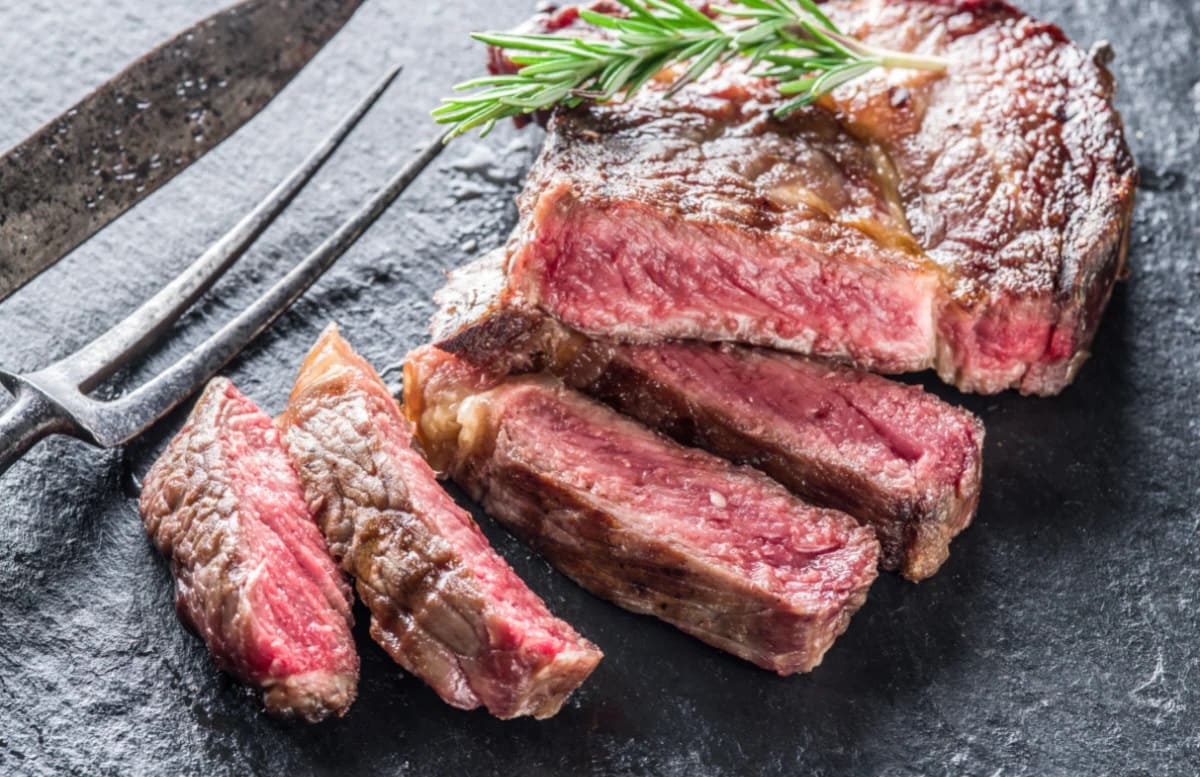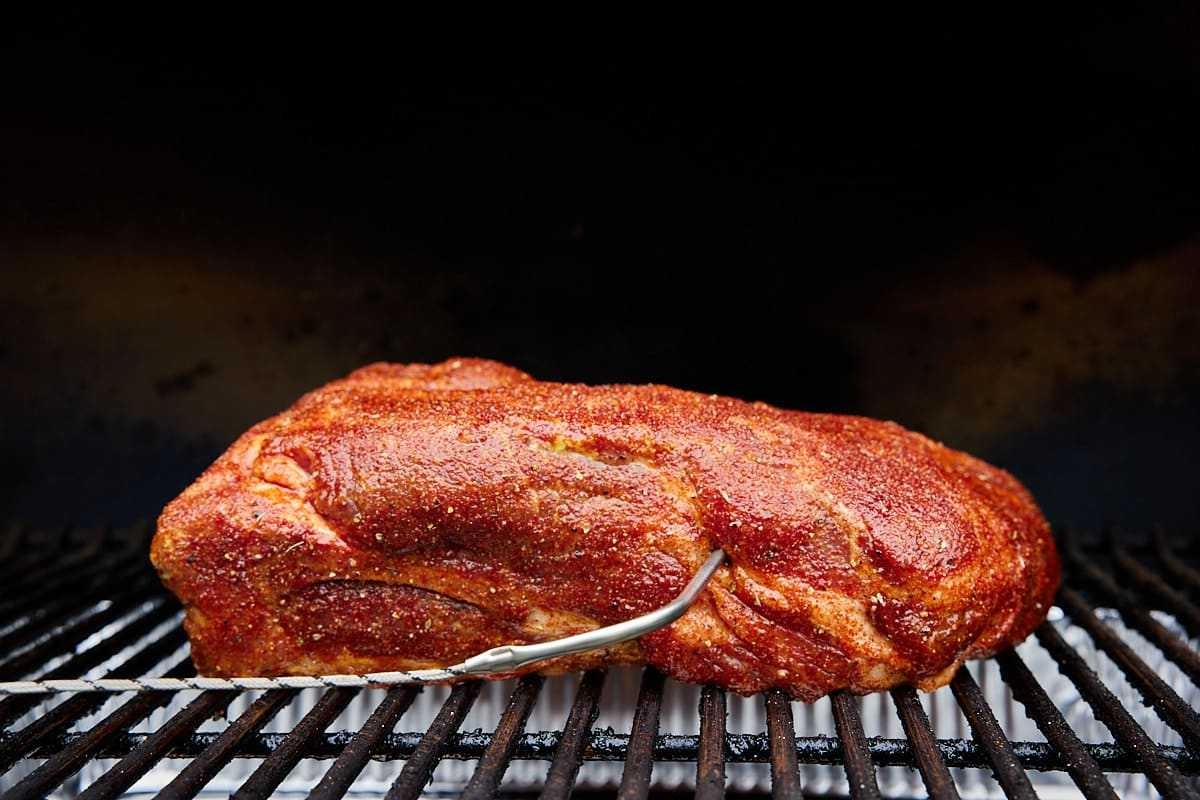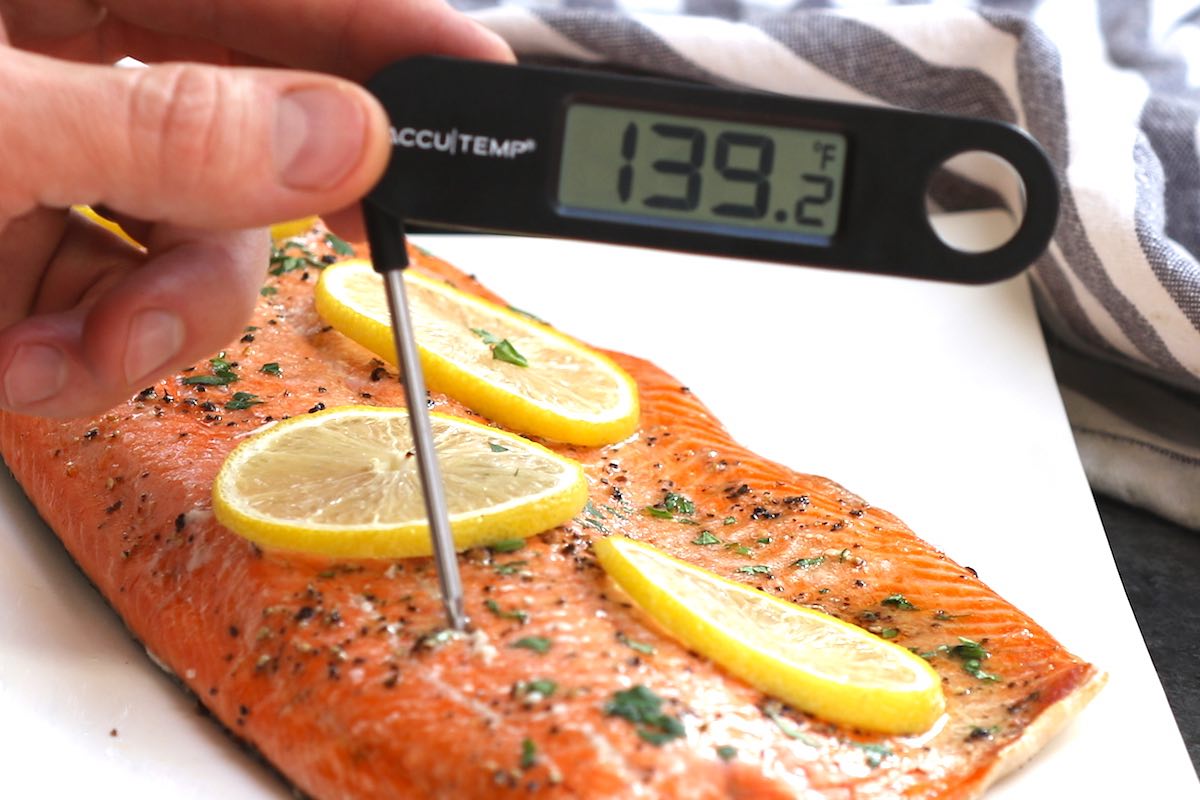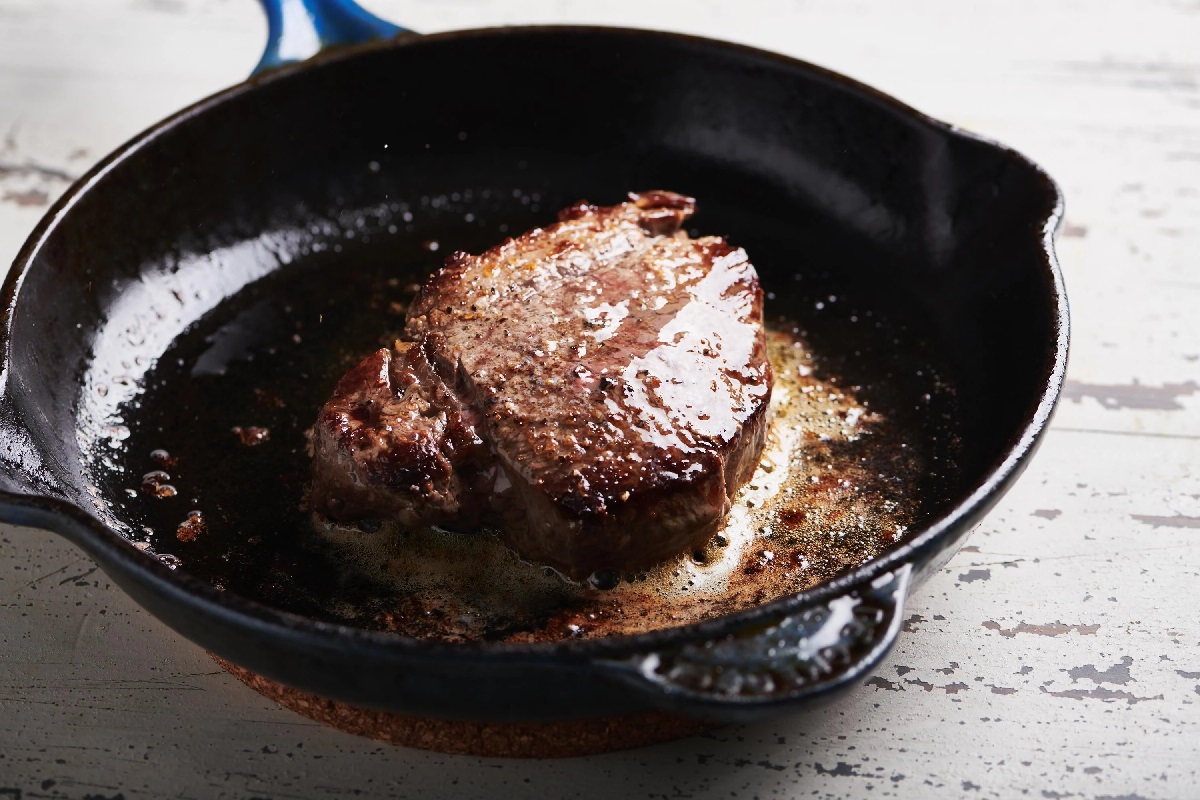Home>Culinary & Beverages>The Optimal Temperature For Cooking Pork Chops


Culinary & Beverages
The Optimal Temperature For Cooking Pork Chops
Published: February 22, 2024
Discover the perfect temperature for cooking pork chops to achieve juicy and flavorful results. Explore culinary and beverage tips for the best cooking experience.
(Many of the links in this article redirect to a specific reviewed product. Your purchase of these products through affiliate links helps to generate commission for Temperatures.com, at no extra cost. Learn more)
Table of Contents
Factors Affecting Pork Chop Cooking Temperature
The optimal temperature for cooking pork chops is influenced by several key factors. Understanding these factors is crucial for achieving perfectly cooked pork chops every time.
-
Thickness of the Pork Chop: The thickness of the pork chop significantly impacts the cooking temperature. Thicker cuts require lower heat for a longer duration to ensure that the center reaches the desired temperature without overcooking the outer layers.
-
Initial Temperature of the Pork: The starting temperature of the pork chop plays a vital role in determining the cooking temperature. If the pork chop is taken directly from the refrigerator, it will require a longer cooking time to reach the desired internal temperature compared to a chop that has been brought to room temperature beforehand.
-
Cooking Method: The chosen cooking method, whether it's grilling, pan-searing, baking, or sous vide, affects the cooking temperature. Each method requires different temperature settings to achieve the best results.
-
Bone-In vs. Boneless: Bone-in pork chops generally require a slightly lower cooking temperature and longer cooking time compared to boneless chops due to the heat distribution around the bone.
-
Desired Doneness: The preferred level of doneness, such as medium-rare, medium, or well-done, influences the cooking temperature. Different levels of doneness require different internal temperatures to ensure the pork chop is cooked to perfection.
Considering these factors is essential for determining the optimal cooking temperature for pork chops. By taking these variables into account, you can ensure that the pork chops are cooked to the ideal level of doneness, resulting in a delectable dining experience.
Recommended Internal Temperature for Pork Chops
The recommended internal temperature for pork chops is a critical aspect of ensuring that this popular cut of meat is cooked to perfection. Achieving the ideal internal temperature not only guarantees food safety but also determines the texture, juiciness, and overall flavor of the pork chops.
For pork chops, the United States Department of Agriculture (USDA) recommends an internal temperature of 145°F (63°C) with a three-minute rest time. This temperature ensures that the pork is safe to eat while retaining its juiciness and tenderness. At this temperature, the pork chops will be slightly pink in the center, delivering a succulent and flavorful dining experience.
It's important to note that the recommended temperature for pork chops has evolved over the years. Previously, the USDA advised cooking pork to an internal temperature of 160°F (71°C) to ensure safety. However, advancements in food safety practices have led to the updated recommendation of 145°F (63°C), which has been found to be equally safe for consumption while preserving the quality of the meat.
When using a meat thermometer to check the internal temperature of pork chops, it should be inserted into the thickest part of the meat, away from the bone. This ensures an accurate reading, allowing you to determine precisely when the pork chops have reached the recommended temperature.
It's worth noting that the pork chops will continue to cook slightly during the resting period, so removing them from the heat source a few degrees below the target temperature is advisable. This approach prevents the pork from overcooking during the resting phase, resulting in a perfectly cooked, tender, and juicy final product.
By adhering to the recommended internal temperature guidelines, you can confidently prepare pork chops that are not only safe to eat but also boast an exquisite texture and flavor profile. Whether you're grilling, pan-searing, or baking pork chops, monitoring the internal temperature is the key to culinary success, ensuring that each bite is a delightful experience for the palate.
Different Cooking Methods for Pork Chops
When it comes to cooking pork chops, there are various methods that can be employed to achieve delectable results. Each cooking technique offers unique advantages, allowing home cooks and culinary enthusiasts to tailor the preparation to their preferences and available resources. Here are some popular cooking methods for pork chops:
Grilling
Grilling pork chops is a beloved method that imparts a delightful smoky flavor while creating appealing grill marks on the meat. To grill pork chops, preheat the grill to medium-high heat and ensure that the grates are clean and lightly oiled to prevent sticking. Season the pork chops with your preferred blend of herbs and spices, then place them on the grill. Cook for approximately 4-5 minutes per side, depending on the thickness of the chops, until they reach the recommended internal temperature. Grilling is an excellent choice for those who appreciate the charred essence and robust flavor that this method delivers.
Pan-Searing
Pan-searing pork chops is a versatile and convenient cooking method that yields succulent and flavorful results. To pan-sear pork chops, heat a skillet over medium-high heat and add a small amount of oil. Once the oil is hot, carefully place the seasoned pork chops in the skillet and sear them for 3-4 minutes on each side until they develop a golden-brown crust. This method is ideal for achieving a caramelized exterior while preserving the juiciness of the pork chops. After searing, the chops can be finished in the oven to ensure even cooking.
Baking
Baking pork chops is a straightforward and hands-off approach that results in tender and juicy meat. Preheat the oven to 375°F (190°C) and place the seasoned pork chops in a baking dish. For added flavor and moisture, consider adding a splash of broth or wine to the dish. Bake the pork chops for 20-25 minutes, or until they reach the recommended internal temperature. This method is perfect for those seeking a fuss-free cooking technique that produces consistently delightful pork chops.
Sous Vide
Sous vide cooking involves vacuum-sealing the seasoned pork chops and immersing them in a precisely controlled water bath. The pork chops are cooked at a lower temperature for an extended period, ensuring uniform doneness and exceptional tenderness. After the sous vide process, a quick sear in a hot skillet or on the grill can be employed to achieve a caramelized exterior, resulting in a perfectly cooked and visually appealing dish.
Each of these cooking methods offers a distinct approach to preparing pork chops, allowing individuals to explore diverse culinary experiences and tailor the cooking process to their preferences. Whether you prefer the smoky essence of grilled pork chops, the caramelized crust from pan-searing, the simplicity of baking, or the precision of sous vide cooking, there's a method to suit every palate and occasion.
Tips for Achieving the Optimal Temperature
-
Use a Meat Thermometer: Investing in a reliable meat thermometer is indispensable for ensuring that pork chops reach the recommended internal temperature. This tool provides an accurate gauge of the pork's doneness, allowing you to achieve the perfect level of juiciness and flavor without the risk of undercooking or overcooking the meat.
-
Allow for Resting Time: After the pork chops have been cooked to the desired temperature, it's crucial to allow them to rest for a few minutes before serving. During this resting period, the residual heat redistributes within the meat, resulting in a more uniform temperature and enhanced juiciness. Additionally, resting allows the juices to settle, preventing them from spilling out when the pork chops are sliced, thereby preserving their succulence.
-
Consider Thickness and Cooking Method: Thicker pork chops require a lower cooking temperature and longer duration to ensure that the center reaches the recommended temperature without drying out the exterior. Conversely, thinner chops may require higher heat for a shorter time. Additionally, the chosen cooking method influences the optimal temperature, with grilling, pan-searing, baking, and sous vide each requiring specific temperature adjustments to achieve the best results.
-
Brining or Marinating: Brining or marinating pork chops before cooking can enhance their flavor and juiciness while providing a buffer against overcooking. These techniques not only infuse the meat with additional layers of flavor but also contribute to moisture retention, resulting in tender and succulent pork chops.
-
Room Temperature Preparation: Allowing the pork chops to come to room temperature before cooking promotes more even cooking and reduces the risk of overcooking the exterior while waiting for the center to reach the desired temperature. This simple step can significantly contribute to achieving the optimal cooking temperature and texture.
-
Adjust for Bone-In Chops: If using bone-in pork chops, it's essential to adjust the cooking temperature and duration to account for the bone's impact on heat distribution. Bone-in chops typically require a slightly lower cooking temperature and longer cooking time to ensure that the meat near the bone reaches the recommended internal temperature.
-
Practice and Patience: Achieving the optimal cooking temperature for pork chops often requires practice and patience. By experimenting with different cooking methods, thicknesses, and seasoning techniques, you can refine your culinary skills and develop an intuitive sense for determining the ideal cooking temperature based on visual cues and texture.
By incorporating these tips into your pork chop preparation, you can elevate your culinary prowess and consistently deliver perfectly cooked pork chops that are juicy, flavorful, and a delight to savor.














